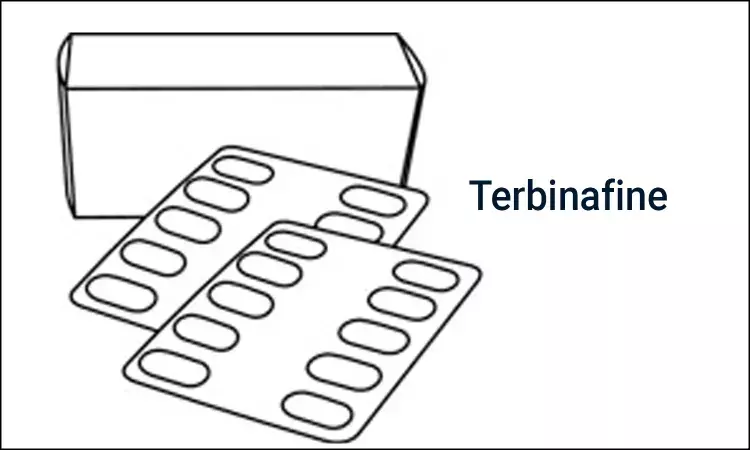- Home
- Medical news & Guidelines
- Anesthesiology
- Cardiology and CTVS
- Critical Care
- Dentistry
- Dermatology
- Diabetes and Endocrinology
- ENT
- Gastroenterology
- Medicine
- Nephrology
- Neurology
- Obstretics-Gynaecology
- Oncology
- Ophthalmology
- Orthopaedics
- Pediatrics-Neonatology
- Psychiatry
- Pulmonology
- Radiology
- Surgery
- Urology
- Laboratory Medicine
- Diet
- Nursing
- Paramedical
- Physiotherapy
- Health news
- Fact Check
- Bone Health Fact Check
- Brain Health Fact Check
- Cancer Related Fact Check
- Child Care Fact Check
- Dental and oral health fact check
- Diabetes and metabolic health fact check
- Diet and Nutrition Fact Check
- Eye and ENT Care Fact Check
- Fitness fact check
- Gut health fact check
- Heart health fact check
- Kidney health fact check
- Medical education fact check
- Men's health fact check
- Respiratory fact check
- Skin and hair care fact check
- Vaccine and Immunization fact check
- Women's health fact check
- AYUSH
- State News
- Andaman and Nicobar Islands
- Andhra Pradesh
- Arunachal Pradesh
- Assam
- Bihar
- Chandigarh
- Chattisgarh
- Dadra and Nagar Haveli
- Daman and Diu
- Delhi
- Goa
- Gujarat
- Haryana
- Himachal Pradesh
- Jammu & Kashmir
- Jharkhand
- Karnataka
- Kerala
- Ladakh
- Lakshadweep
- Madhya Pradesh
- Maharashtra
- Manipur
- Meghalaya
- Mizoram
- Nagaland
- Odisha
- Puducherry
- Punjab
- Rajasthan
- Sikkim
- Tamil Nadu
- Telangana
- Tripura
- Uttar Pradesh
- Uttrakhand
- West Bengal
- Medical Education
- Industry
Terbinafine use safe during pregnancy: JAMA

A new study published in JAMA Dermatology has declared Terbinafine use safe during pregnancy. Terbinafine is assigned as category B to pregnancy by the FDA.
Denmark: Terbinafine is a commonly used antifungal agent, but safety data of its use in pregnancy are limited. It has been assigned to pregnancy category B by the FDA.
A recent study publishes in the JAMA Dermatology shows that both oral and topical forms of the antifungal agent terbinafine seem safe to use during pregnancy. A nationwide, registry-based cohort study was conducted in Denmark from January 1, 1997, to December 31, 2016, which included 1, 650, 649 pregnancies.
Based on the study, oral terbinafine-exposed (n = 891 pregnancies) and topical terbinafine-exposed (n = 3174) pregnancies were identified; up to a total of 40, 650 unexposed pregnancies were included for the matched outcome analyses.
In the view of the risk of major malformations, the prevalence odds ratios were
1)1.01 for oral terbinafine-exposed vs unexposed pregnancies,
2)1.08 for topical terbinafine-exposed vs unexposed pregnancies, and
3)1.18 for oral vs topical terbinafine-exposed pregnancies.
With respect to the risk of spontaneous abortion, the hazard ratios were
1)1.06 for oral terbinafine-exposed vs unexposed pregnancies,
2)1.04 for topical terbinafine-exposed vs unexposed pregnancies, and
3)1.19 for oral vs topical terbinafine-exposed pregnancies.
No statistically significant associations were seen in sensitivity analyses of any of the comparisons.
The researchers concluded that among pregnancies exposed to oral or topical terbinafine, no increased risk of major malformations or spontaneous abortion was identified.
"Our results may provide reassurance for pregnancies exposed to terbinafine, as well as help inform clinicians, patients, and drug regulatory authorities," stated Dr Niklas Worm Andersson of University Hospital Bispebjerg and Frederiksberg in Copenhagen. "However, given that this is the first published observational study to examine the association between terbinafine use in pregnancy and fetal safety outcomes, additional studies are needed to confirm and expand on these findings.", he added.
Dr Jenny Murase of the Palo Alto Foundation Medical Group in Mountain View, CA, co-author of a related editorial, added that although terbinafine is likely the safest anti-fungal medication to use during pregnancy, it is always important to question the appropriateness of treating non-life-threatening issues during pregnancy and lactation.
For reading the full article click on the following link,
https://jamanetwork.com/journals/jamadermatology/article-abstract/2762561?resultClick=1
MBBS
Dr K B AARTHI-has completed MBBS from SRM UNIVERSITY TAMIL NADU,Her interest is in the field of Pediatrics and Anaesthesia, also passionate in doing research and publishing articles.She joined Medical Dialogues in 2020 and publishes health news and medical updates. Email: editorial@medicaldialogues.in. Contact no. 011-43720751,9786713226
Dr Kamal Kant Kohli-MBBS, DTCD- a chest specialist with more than 30 years of practice and a flair for writing clinical articles, Dr Kamal Kant Kohli joined Medical Dialogues as a Chief Editor of Medical News. Besides writing articles, as an editor, he proofreads and verifies all the medical content published on Medical Dialogues including those coming from journals, studies,medical conferences,guidelines etc. Email: drkohli@medicaldialogues.in. Contact no. 011-43720751


